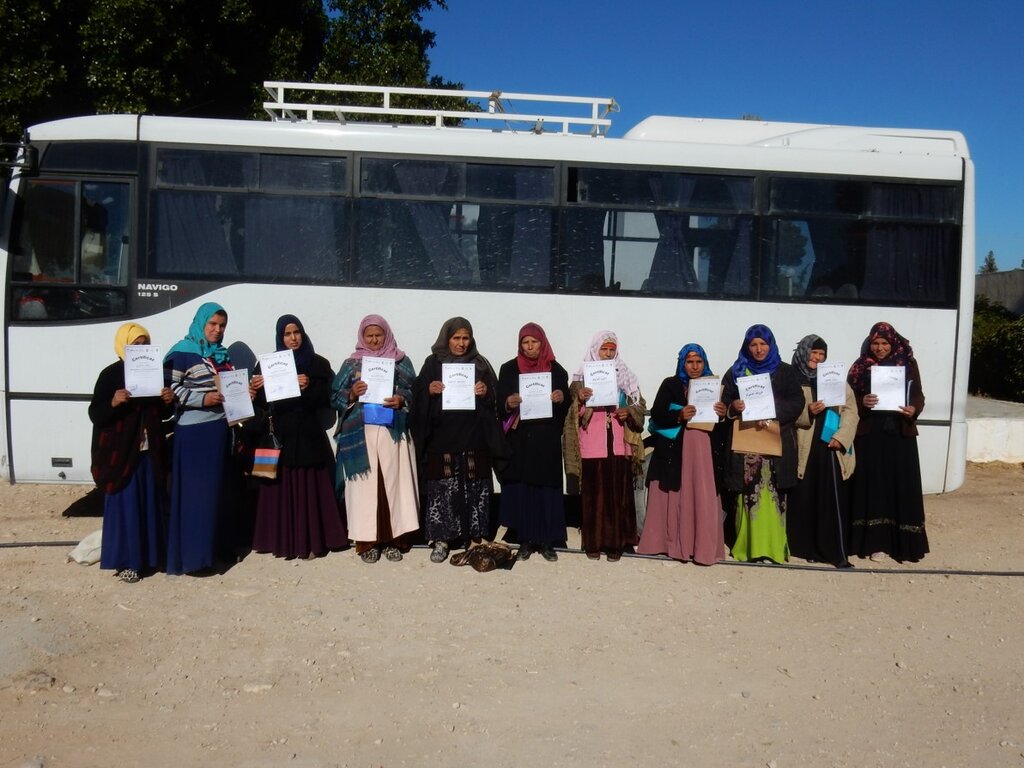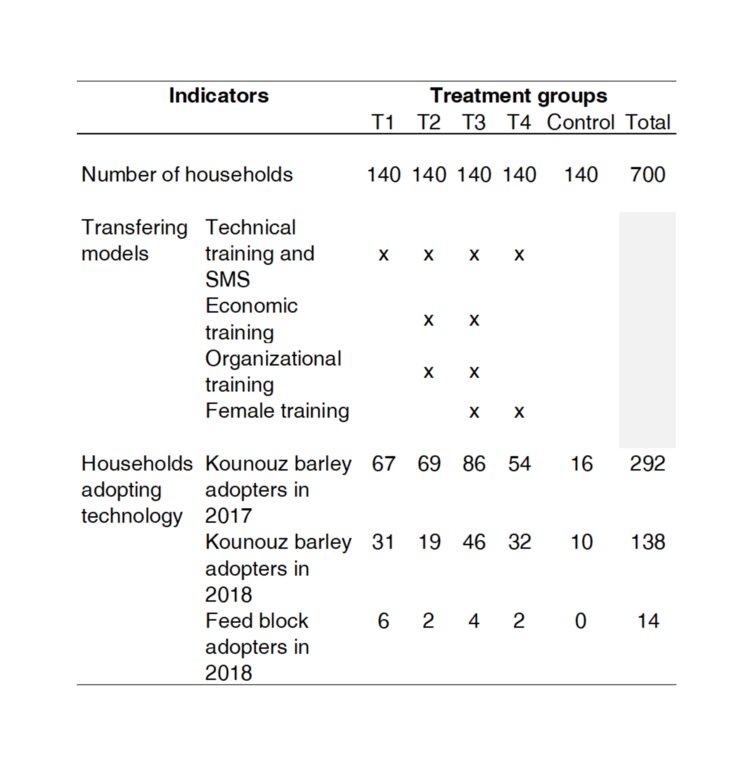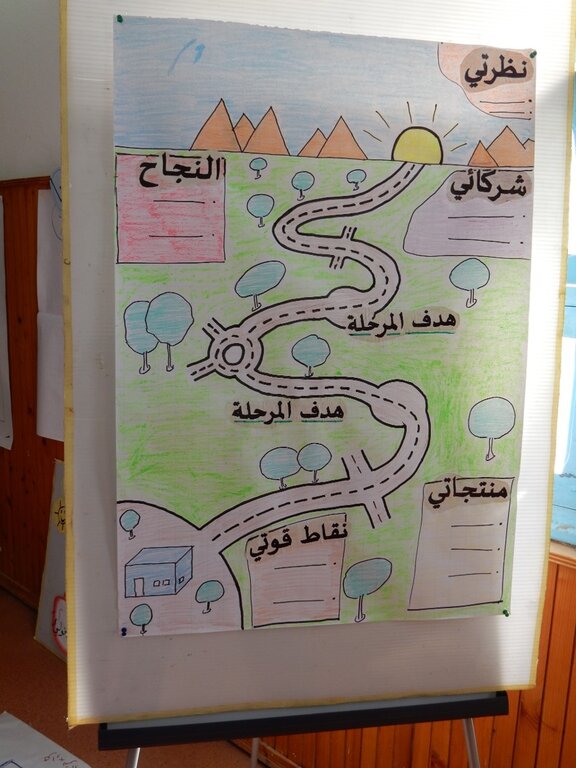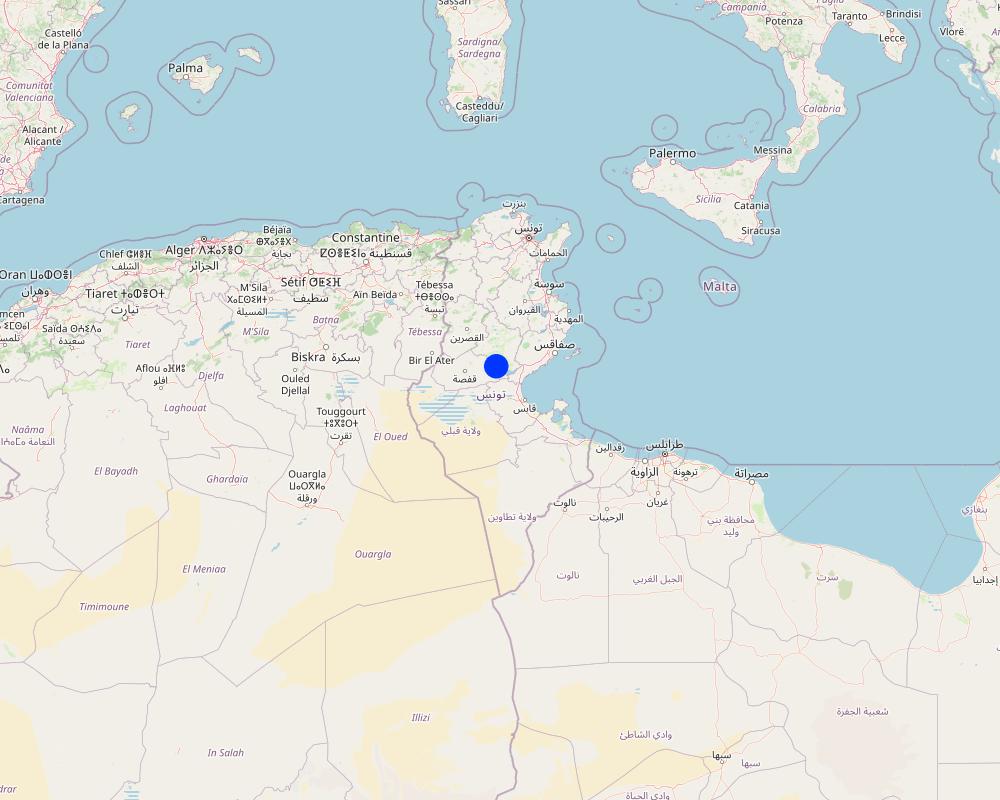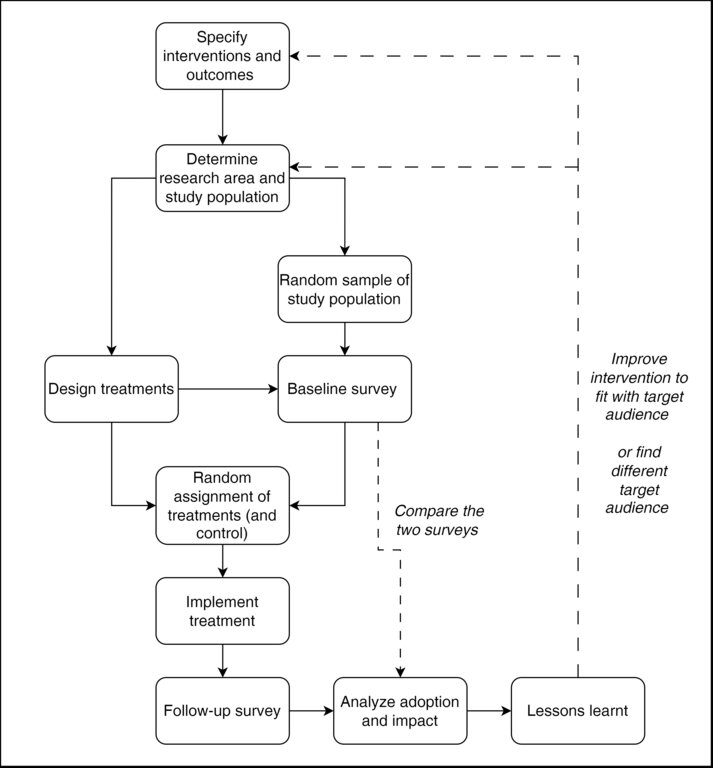Lessons learned from the "Mind the Gap" project: Improving Dissemination Strategies [تونس]
- تاريخ الإنشاء:
- تحديث:
- جامع المعلومات: Joren Verbist
- المحرر: –
- المراجعون: William Critchley, Rima Mekdaschi Studer
approaches_7123 - تونس
عرض الأقسام
توسيع الكل طي الكل1. معلومات عامة
1.2 تفاصيل الاتصال بالأشخاص الرئيسيين لمصدر المعلومات والمؤسسات المعنية بتقييم وتوثيق النهج
الشخص (الأشخاص) الرئيسي لمصدر المعلومات
Innovation specialist:
Rudiger Udo
International Center of Agricultural Research in Dry Areas (ICARDA)
تونس
Gender specialist:
Najjar Dina
International Center of Agriculture Research in the Dry Areas (ICARDA)
المغرب
Natural Resource Economist:
Dhehibi Boubaker
International Center of Agricultural Research in Dry Areas (ICARDA)
تونس
Werner Jutta
German Ministry of Agriculture
Derbel Sondos
AVFA (National Agricultural Training and Extension Service)
اسم المشروع الذي سهّل توثيق/تقييم النهج (إذا كان ذلك على صلة)
ICARDA Institutional Knowledge Management Initiativeاسم المؤسسة (المؤسسات) التي سهلت توثيق/تقييم النهج (إذا كان ذلك على صلة)
International Center for Agricultural Research in the Dry Areas (ICARDA) - لبنان1.3 الشروط المتعلقة باستخدام البيانات الموثقة من خلال WOCAT
متى تم تجميع البيانات (ميدانيا)؟:
2019
يوافق جامع المعلومات والشخص (لاشخاص) الرئيسي لمصدر المعلومات على الشروط المتعلقة باستخدام البيانات الموثقة من خلال WOCAT:
نعم
1.4 المراجع الخاصة باستبيان(استبيانات) تقنيات الإدارة المستدامة للأراضي
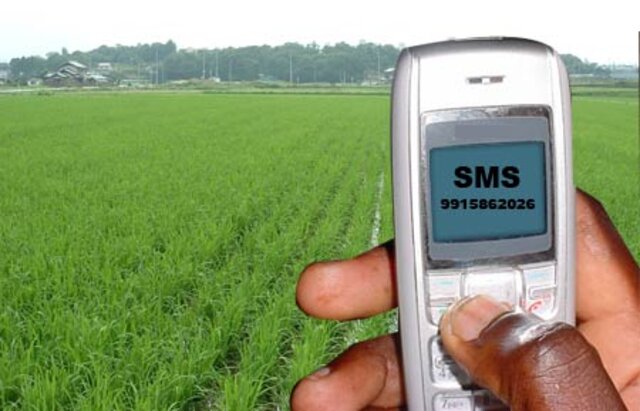
ICT2Scale – supporting smallholder farmers with cellphone-based services … [تونس]
The ICT2Scale project contributes to better land management by supplying smallholder farmers with targeted SMS messages on diverse agricultural practices. This enables them to optimize resources and adopt more sustainable methods, consequently improving livelihoods in remote areas.
- جامع المعلومات: Joren Verbist
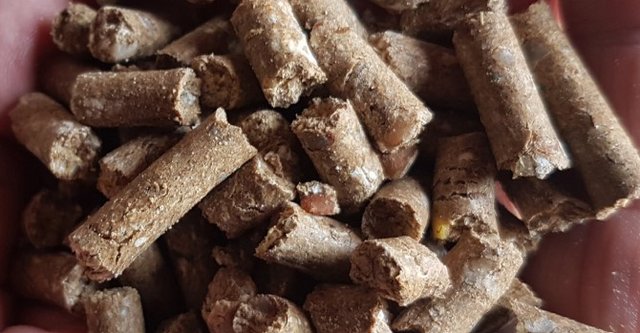
Small-Scale Nutrient-Dense Pellet Production [تونس]
Compressing agro-industrial by-products produces nutrient-dense livestock feed pellets that can compete with expensive and imported alternatives. This innovation consists of a small-scale compressor or "pelletizer" and formulae to create feed pellets of sufficient quality with locally available inputs.
- جامع المعلومات: Joren Verbist
2. وصف نهج الإدارة المستدامة للأراضي
2.1 وصف موجز للنهج
The “Mind the Gap” project researched the adoption gap between agricultural research and women and men farmers. Its objective was to determine most effective and cost-efficient technology transfer strategies and give recommendations to national extension institutes and development partners to adapt their scaling strategy
2.2 وصف تفصيلي للنهج
وصف تفصيلي للنهج:
Research into innovative agricultural technologies for the livestock-barley system in semi-arid Tunisia has yielded success. However, adoption of these has remained low for decades, not only in Tunisia but across developing countries (Noltze et al. 2012; DFID 2014; Syngenta Foundation 2015). Bridging this 'adoption gap' has proved to be a challenge, and there has been limited emphasis on improving agricultural extension methods. In this context, the International Center for Agricultural Research in Dry Areas (ICARDA) together with partners set up the "Mind the Gap" project, funded by the BMZ and GIZ.
This project aimed to fill this gap by developing and testing new models for transferring sustainable technology packages to smallholder farmers. Four transfer models were implemented across four test groups:
T1: Technical training and SMS.
T2: Technical training, SMS, economic, and organizational training.
T3: Technical training, SMS, economic and organizational training, with a focus on female empowerment.
T4: Technical training, SMS, and female empowerment.
The transferring models are thus (a) Technical training and SMS; (b) Economic training; (c) Organization training; (d) Female empowerment.
Technical training and SMS involved sending weekly text messages containing technical and organizational information to 560 farmer households from August 2017. Workshops were conducted in 2017 and 2018 to develop these messages in collaboration with regional extension services and other stakeholders.
Economic training included one-day sessions in 2017 to demonstrate the economic benefits of innovations. In 2018, a Farmer Business School (FBS) approach was adopted to enhance farmers' entrepreneurial skills, with a tailored curriculum and seven five-day courses delivered to 280 farmer households.
The organizational training aimed to enhance farmers' understanding cooperative management. Through classroom sessions and visits to existing cooperatives, farmers received insights into cooperative creation, management challenges, and the benefits of collective action.
Female empowerment activities engaged women from 280 farmer households, focusing on visits to female cooperatives and sensitization events to encourage their participation in agricultural activities and access to credit.
The adoption of two innovations was evaluated through this methodology. The first innovation, "Kounouz," is an improved barley variety designed to better withstand drought conditions. The second innovation involves feedblocks, also known as nutrient-dense pellets, which serve as an alternative livestock feed made from by-products.
The project rigorously evaluated these transfer models through randomized controlled trials, focusing on their impact on innovation adoption rates and cost-efficiency. The combined approach, carried out under T3, showed the highest adoption rates, particularly among female-headed households. Field visits were identified as a significant contributor to technology adoption, while SMS proved most cost-effective.
Most importantly, it showed that the four transferring models should be used in combination for the highest adoption.
In conclusion, the research underscores that addressing the 'adoption gap' in agricultural innovation requires comprehensive approaches encompassing technical, economic, organizational, and gender empowerment training. By combining these elements significant strides can be made in cost-efficiently enhancing technology adoption rates among smallholder farmers, offering valuable insights for agricultural extension efforts not only in Tunisia but also across the MENA region and potentially beyond.
Acknowledgement:
We would like to thank BMZ/ GIZ who supported this innovative research through their contributions to the “Mind the Gap” project as well as Tunisian NARES (INRAT, AVFA, OEP, CRDA) for co-implementing project activities.
2.3 صور عن النهج
2.5 البلد/المنطقة/المواقع التي تم تطبيق النهج فيها
البلد:
تونس
Map
×2.6 تواريخ بدء وإنهاء تنفيذ النهج
أشر إلى سنة البدء:
2016
سنة الإنهاء (إذا لم يعد النهج مطبقًا):
2019
2.7 نوع النهج
- قائم على مشروع/برنامج
2.8 الغايات/الأهداف الرئيسية للنهج
To better understand the adoption gap of new sustainable farming technologies, and discover cost-efficient and effective approaches to improve adoption of these technologies.
2.9 الظروف التي تمكن أو تعيق تنفيذ التقنية/التقنيات المطبقة بموجب النهج
المعايير والقيم الاجتماعية /الثقافية/ الدينية
- معيق
Participation of women at trainings was sometimes low (no availability to due household tasks)
توفر/الوصول إلى الموارد والخدمات المالية
- تمكين/تمكيني
Access to financial resources allowed purchase of technologies (Kounouz seeds or feed blocks)
الإطار المؤسساتي
- تمكين/تمكيني
The right institutions were selected (OEP, INRAT, AVFA) to implement MtG project activities
التعاون/التنسيق بين الجهات الفاعلة
- تمكين/تمكيني
Collaboration between the partners (NARES) was good and important; eg INRAT multiplied Kounouz seeds ; OEP and CRDA distributed Kounouz seeds and AVFA trained farmers on Kounouz production
السياسات
- معيق
Feed block production has strict regulations
المعرفة حول الإدارة المستدامة للأراضي، والوصول إلى الدعم الفني
- تمكين/تمكيني
Technical support to practice the technology (eg feed block composition) is important and was guaranteed by OEP
الأسواق (لشراء المدخلات وبيع المنتجات) والأسعار
- معيق
Prices of substitute feed like subsidized wheat bran and barley hinder the adoption of feed blocks.
عبء العمل، توفر القوى العاملة
- معيق
Workload for feedblock production is high and manpower not always available.
3. المشاركة وأدوار الأطراف المعنية
3.1 أصحاب المصلحة المعنيون بالنهج وأدوارهم
- مستخدمو الأراضي المحليون/المجتمعات المحلية
No communities but individual farmers
Inviting farmers to trainings,
Organization of baseline and follow up survey with OEP
- متخصصون في الإدارة المستدامة للأراضي / مستشارون زراعيون
AVFA (National Agricultural Training and Extension Service)
CTV (Local Extension Service)
OEP (Livestock and Pasture Office)
AVFA:
Organizational and economic trainings (FBS, BUS, cooperatives, etc) to 280 HH
Organized logistics (transport, restoration, training room)
OEP:
Technical training on feed blocks to 560 HH
Distribution of inputs to CTV, selection of cooperatives.
- الباحثون
University of Goettingen
INRAT (National Agricultural Research Institute)
University of Goettingen:
Project development, PhD students, data collection for baseline and follow up survey
INRAT:
Development of new barley variety (Kounouz) in collaboration with ICARDA
Technical training on barley with OEP to 560 HH
- منظمة دولية
ICARDA
GIZ
ICARDA: Overall technical and administrative coordination
GIZ: Trained AVFA trainers on FBS and BUS
إذا كان هناك العديد من الأطراف المعنية، قم بالإشارة إلى الوكالة الرائدة:
ICARDA
3.2 انخراط مستخدمي الأراضي المحليين/المجتمعات المحلية في المراحل المختلفة للنهج
| انخراط مستخدمي الأراضي المحليين/المجتمعات المحلية | حدد من شارك وصف الأنشطة | |
|---|---|---|
| المبادرة/التحفيز | سلبي | The experiments were designed and set up by the research agency. |
| التخطيط | سلبي | Methodology was also determined by the research agency. |
| التنفيذ | تفاعلي | The approach to dissemination that proved successful was interactive. |
| الرصد/التقييم | سلبي | The experiment was monitored by the research agency. |
3.3 مخطط التدفق (إذا كان متاحًا)
3.4 اتخاذ القرار بشأن اختيار تقنية/تقنيات الإدارة المستدامة للأراضي
حدد من الذي قرر اختيار التقنية/التقنيات التي سيتم تنفيذها:
- متخصصون في الإدارة المستدامة للأراضي بشكل أساسي، بعد التشاور مع مستخدمي الأراضي
اشرح:
There was a strong focus on research rather than implementation, which required scientific expertise rather than land user knowledge.
حدد على أي أساس تم اتخاذ القرارات:
- تقييم المعرفة الموثقة جيدًا بشأن الإدارة المستدامة للأراضي(اتخاذ القرارات القائمة على الأدلة)
- نتائج البحوث
4. الدعم الفني وبناء القدرات وإدارة المعرفة
4.1 بناء القدرات/التدريب
هل تم تقديم التدريب لمستخدمي الأراضي / الأطراف المعنيين الآخرين؟:
نعم
حدد من تم تدريبه:
- مستخدمو الأراضي
إذا كان ذلك على صلة، حدد الجنس والعمر والوضع والعرق وما إلى ذلك.
Land user, with a strong focus on females for two treatment groups.
شكل التدريب:
- من مزارع إلى مزارع
- مناطق العرض
- اجتماعات عامة
- دورات
المواضيع المغطاة:
The four main trainings were given:
-Technical with SMS
-Economic (e.g., better farm management)
-Organizational (e.g., setting up farmer cooperatives)
-Female empowerment
4.2 خدمة استشارية
هل يملك مستخدمو الأراضي وصولا إلى خدمة استشارية؟:
نعم
حدد ما إذا كانت الخدمة الاستشارية متوفرة:
- في حقول مستخدمي الأراضي
- في مراكز دائمة
وصف/تعليقات:
Advice was given through the training which included both on-site (e.g., demonstration fields) and meetings
4.3 تعزيز المؤسسات (التطوير التنظيمي)
هل تم إنشاء أو تعزيز مؤسسات من خلال هذا النهج؟:
- نعم، باعتدال
حدد المستوى (المستويات) التي تم فيها تعزيز أو إنشاء المؤسسات:
- محلي
صف المؤسسة والأدوار والمسؤوليات والأعضاء وما إلى ذلك.
Training sessions regarding cooperation can be organized.
حدد نوع الدعم:
- بناء القدرات/التدريب
4.4 الرصد والتقييم
هل يشكل الرصد والتقييم جزءا من النهج؟:
نعم
التعليقات:
Four treatment groups were made based on different combinations of training, they were evaluated for their adoption of Kounouz barley and feed blocks.
إذا كانت الإجابة بنعم، فهل من المقصود استخدام هذه الوثائق للمراقبة والتقييم؟:
نعم
4.5 البحوث
هل كانت البحوث جزءًا من النهج؟:
نعم
حدد المواضيع:
- علم الاجتماع
- الاقتصاد / التسويق
- تكنولوجيا
أعط تفاصيل إضافية وأشر إلى من قام بالبحوث:
Several research papers were published with authors from different partners.
5. التمويل والدعم المادي الخارجي
5.1 الميزانية السنوية لمكون الإدارة المستدامة للأراضي في النهج المذكور
أشر إلى ميزانية النهج السنوية لمكون الإدارة المستدامة للأراضي بالدولار الأمريكي:
400000,00
التعليقات (على سبيل المثال المصادر الرئيسية للتمويل/الجهات المانحة الرئيسية):
GIZ/BMZ
5.2 الدعم المالي/المادي المقدم لمستخدمي الأراضي
هل حصل مستخدمو الأراضي على دعم مالي/ مادي لتنفيذ التقنية/ التقنيات؟:
كلا
5.3 إعانات لمدخلات محددة (بما في ذلك العمالة)
- غير موجود
5.4 الائتمان
هل تم توفير ائتمان في إطار نهج أنشطة الإدارة المستدامة للأراضي؟:
كلا
5.5 حوافز أو وسائل أخرى
هل تم استخدام حوافز أو أدوات أخرى لتشجيع تنفيذ تقنيات الإدارة المستدامة للأراضي؟:
كلا
6. تحليل الأثر والتصريحات الختامية
6.1 آثار النهج
هل ساهم النهج في تمكين مستخدمي الأراضي المحليين وتحسين مشاركة الأطراف المعنية؟:
- لا
- نعم، قليلا
- نعم، باعتدال
- نعم، إلى حد كبير
هل ساعد النهج مستخدمي الأراضي على تنفيذ وصيانة تقنيات الإدارة المستدامة للأراضي؟:
- لا
- نعم، قليلا
- نعم، باعتدال
- نعم، إلى حد كبير
هل نجح النهج في تعبئة/تحسين الوصول إلى الموارد المالية لتنفيذ الإدارة المستدامة للأراضي؟:
- لا
- نعم، قليلا
- نعم، باعتدال
- نعم، إلى حد كبير
هل أدى النهج إلى تحسين المساواة بين الجنسين وتمكين النساء والفتيات؟:
- لا
- نعم، قليلا
- نعم، باعتدال
- نعم، إلى حد كبير
هل أدى هذا النهج إلى تحسين الأمن الغذائي / تحسين التغذية؟:
- لا
- نعم، قليلا
- نعم، باعتدال
- نعم، إلى حد كبير
6.2 المحفز الرئيسي لقيام مستخدمي الأراضي بتنفيذ الإدارة المستدامة للأراضي
- زيادة الإنتاج
- زيادة الربح (القدرة)، وتحسين نسبة التكلفة إلى العائد
- الحد من مخاطر الكوارث
- الانتماء إلى حركة/ مشروع/ مجموعة/ شبكات
- تعزيز المعرفة والمهارات في مجال الإدارة المستدامة للأراضي
6.3 استدامة أنشطة النهج
هل يمكن لمستخدمي الأراضي المحافظة على استدامة ما تم تنفيذه من خلال النهج (بدون دعم خارجي)؟:
- نعم
6.4 نقاط قوة/مزايا النهج
| نقاط القوة/ المزايا/ الفرص من وجهة نظر جامع المعلومات أو غيره من الاشخاص الرئيسيين لمصدر المعلومات |
|---|
| Highest adoption rate for Kounouz was in T3 (61% in 2017 and 33% in 2018) where the whole package of extension was provided (technical training, SMS + economic and organizational training +female empowerment + access to input). This indicates that different adoption models should be combined rather than singled out. |
| The treatment groups T3 and T4 which received the female empowerment training have the highest Kounouz variety adoption rates in 2018 (T3 = 33%, T4 =24%). The implication of women in the project has a positive influence on the adoption of innovative technologies. The gender dimension should be considered as a vector of adoption of new technologies especially in Tunisian agriculture. |
|
In terms of cost, the government can choose according to the available budgetary resources: i) Highest level of technology adoption with the highest cost of trainings 34% in T3 with a total cost of trainings estimated at 900 TND per person ii) Medium technology adoption rate with a lower cost of trainings 22% in T1 with a total cost of trainings estimated to 230 TND per person). T3 is most effective but T1 is more cost efficient. |
| The strong collaboration between four public research and extension institutions (OEP, INRAT, AVFA and CTV) and one international agricultural institution (ICARDA) is one of the important factors for adoption and transfer of knowledge |
6.5 نقاط الضعف/ العيوب في المنهج وطرق التغلب عليها
| نقاط الضعف/ المساوىء/ المخاطر من وجهة نظر جامع المعلومات أو غيره من الاشخاص الرئيسيين لمصدر المعلومات | كيف يمكن التغلب عليها؟ |
|---|---|
| Concerning the technical extension methods, the field visit (with an intermediate cost) especially done in the similar areas is more efficient than the training (with a high cost) and the SMS text message (with a very low cost). | However, these extension methods are complementary and encourage the project’s farmers to adopt innovative technologies. |
7. المراجع والروابط
7.1 طرق جمع/مصادر المعلومات
- زيارات ميدانية، مسوحات ميدانية
- مقابلات مع المتخصصين/الخبراء في الإدارة المستدامة للأراضي
- التجميع من التقارير والوثائق الأخرى الموجودة
7.3 روابط للمعلومات ذات الصلة المتوفرة على الإنترنت
العنوان/الوصف:
Boubaker Dhehibi, Mohamed Zied Dhraief, Udo Rudiger, Aymen Frija, Jutta Werner, Liza Straussberger, Barbara Rischkowsky. (13/4/2022). Impact of improved agricultural extension approaches on technology adoption: Evidence from a randomised controlled trial in rural Tunisia. Experimental Agriculture, 58, pp. 1-16.
عنوان الرابط URL:
https://hdl.handle.net/20.500.11766/67344
العنوان/الوصف:
Boubaker Dhehibi, Udo Rudiger. (24/12/2019). Synthesis Mind the Gap.
عنوان الرابط URL:
https://hdl.handle.net/20.500.11766/10505
العنوان/الوصف:
Udo Rudiger. (16/12/2019). Mind the Gap: Improving Dissemination Strategies to Increase Technology Adoption by Smallholders. Beirut, Lebanon: International Center for Agricultural Research in the Dry Areas (ICARDA).
عنوان الرابط URL:
https://hdl.handle.net/20.500.11766/10471
العنوان/الوصف:
Samar Zaidi, Boubaker Dhehibi, Mohamed Zied Dhraief, Mohamed Arbi Abdeladhim. (22/3/2023). Résilience des ménages face à l’insécurité alimentaire et au changement climatique dans les régions du centre et du nord-est de la Tunisie: Une analyse empirique. New Medit, 22 (1), pp. 19-34.
عنوان الرابط URL:
https://hdl.handle.net/20.500.11766/68229
العنوان/الوصف:
Boubaker Dhehibi, Jutta Werner, Matin Qaim. (7/3/2018). Designing and Conducting Randomized Controlled Trials (RCTs) for Impact Evaluations of Agricultural Development Research: A Case Study from ICARDA’s ‘Mind the Gap’ Project in Tunisia. Beirut, Lebanon: International Center for Agricultural Research in the Dry Areas (ICARDA).
عنوان الرابط URL:
https://hdl.handle.net/20.500.11766/8209
العنوان/الوصف:
Boubaker Dhehibi, Jutta Werner, Hloniphani Moyo. (18/9/2018). Developing a policy framework for agricultural extension systems in Tunisia. Beirut, Lebanon: International Center for Agricultural Research in the Dry Areas (ICARDA).
عنوان الرابط URL:
https://hdl.handle.net/20.500.11766/8390
العنوان/الوصف:
Quang Bao Le, Jutta Werner, Boubaker Dhehibi, Mounir Louhaichi, Chandrashekhar Biradar. (10/11/2019). Functionally context socio-ecological type (fCSET) approach to support outscaling of agricultural innovation options.
عنوان الرابط URL:
https://hdl.handle.net/20.500.11766/10801
العنوان/الوصف:
Boubaker Dhehibi, Udo Rudiger, Mohamed Zied Dhraief. (9/9/2019). Factors Influencing Farmers’ Decisions to Adopt Improved Technologies in Semi-Arid Farming Systems: A case study of the barley variety Kounouz and feed blocks technology in Tunisia. Beirut, Lebanon: International Center for Agricultural Research in the Dry Areas (ICARDA).
عنوان الرابط URL:
https://hdl.handle.net/20.500.11766/10223
العنوان/الوصف:
Hloniphani Moyo, Jutta Werner, Boubaker Dhehibi, Udo Rudiger, Cherifa Saidi. (14/4/2019). Improving dissemination strategies to increase technology adoption by smallholder farmers in Tunisia. Beirut, Lebanon: International Center for Agricultural Research in the Dry Areas (ICARDA).
عنوان الرابط URL:
https://hdl.handle.net/20.500.11766/9813
الروابط والوحدات المواضيعية
توسيع الكل طي الكلالروابط

ICT2Scale – supporting smallholder farmers with cellphone-based services … [تونس]
The ICT2Scale project contributes to better land management by supplying smallholder farmers with targeted SMS messages on diverse agricultural practices. This enables them to optimize resources and adopt more sustainable methods, consequently improving livelihoods in remote areas.
- جامع المعلومات: Joren Verbist

Small-Scale Nutrient-Dense Pellet Production [تونس]
Compressing agro-industrial by-products produces nutrient-dense livestock feed pellets that can compete with expensive and imported alternatives. This innovation consists of a small-scale compressor or "pelletizer" and formulae to create feed pellets of sufficient quality with locally available inputs.
- جامع المعلومات: Joren Verbist
الوحدات المواضيعية
لا يوجد وحدات مواضيعية



